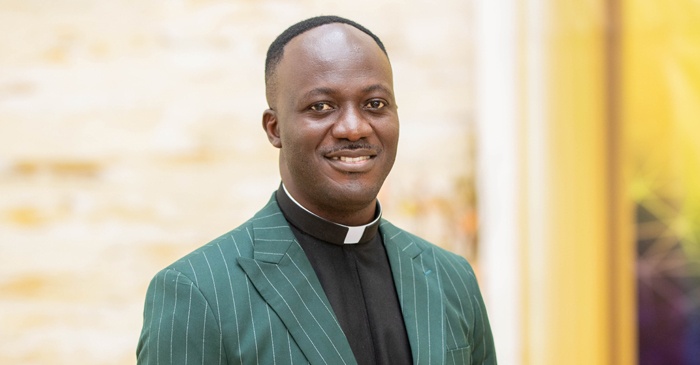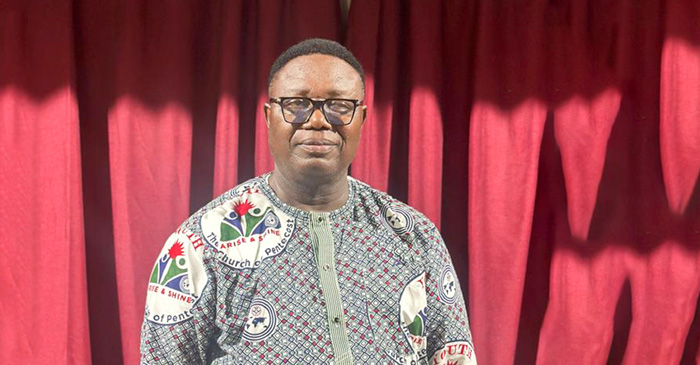
Have you ever dolled yourself up so beautifully only to meet the disapproving look in your parents’ eyes? You can’t help but wonder, “what’s wrong with my dress? It can’t be the neckline. It must be for flaunting my fair thighs and accentuating my curves with how ‘fitting’ the dress is. But I look dashing! Such dresses aren’t worn very long: just cute and perfect.”
“Dress how you want to be addressed” is a famous saying that highlights the importance of dressing appropriately. Dressing up is an art that reflects our personality, values, and beliefs. In today’s world, where fashion is constantly evolving, it is important to understand what it means to be classy yet decent in your dressing. A classy but decent dress is stylish, fashionable, trendy, and elegant but does not compromise modesty and decency. This means avoiding revealing or provocative clothing and opting for a more conservative yet elegant attire. Think of it as the fashion equivalent of a perfectly timed punchline – it may not be the loudest or most attention-grabbing, but it’s certain to leave a lasting impression.
Appropriate attire is essential for all occasions, and it is important to understand what constitutes classy but decent dressing to make a positive impression on all manner of people in different spheres of life. Dressing appropriately for social gatherings such as weddings, parties, and religious events is important to show respect and honor the occasion. It is also a way to express our values and beliefs. Therefore, understanding the concept of classy but decent dressing can help us align our wardrobe choices with our values and beliefs.
Before we get into the nitty-gritty of dressing in a classy but decent manner, let’s walk ourselves through a brief history of clothing, shall we? We will discover how much transformation dressing has undergone. And while that transformation may be good, we will see how it has changed the apparent purpose of clothing. Let’s start from the very beginning; the era where Eve is seen breaching the law and initiating her husband into the act. After the initiation, they realised that they were naked, but God made leather clothing for them and dressed them in it (Genesis 3:21 MSG). Thus, the initial and apparent purpose of clothing was for covering. In subsequent times, clothing was made not only for covering but for protection, modesty (Genesis 24:65), status, and identification (Priests, for example).
The primitive clothes in the bible were made from wool, linen, animal skins, etc. This provided warmth as well as protection against sun rays, cold, rough surfaces, sharp stones, bites, and rash-causing plants. Gradually, clothing took a different turn. They were not only worn for protection or warmth but also to signify an occurrence, festival, social status, and the culture of a populace. The Israelites before and in their journey to the land of Canaan took to the fashion sense of the people around them. Their fashion sense began to change gradually and with time, it evolved. In biblical history, John the Baptist had that fashion sense. He wore an undergarment very close to the skin (ezor) and fastened with a girdle (hagorah). Little Samuel also had a robe girded with a linen ephod (1 Samuel 2:18). The Bible describes the garment of Jesus as a tunic without seam woven from top to bottom, a vivid picture of how much a great transformation clothing has made; from animal skin to tunic!
As civilisations developed, clothing became more sophisticated and varied in style and design. The ancient Egyptians, for example, wore flowing linen garments made from locally grown flax. Their clothing was often adorned with intricate embroidery and jewelry, and different colors and patterns were used to indicate social status.
Cultural and societal changes have impacted the way Christians dress throughout history. In some cases, these changes have led to a shift away from traditional values of modesty and simplicity. For example, the Industrial Revolution led to the mass production of clothing, making fashionable clothing more accessible and affordable. This led some Christians to adopt more fashionable clothing, even if it conflicted with traditional values. In addition, the rise of secularism in the 20th century led to a greater emphasis on individualism and self-expression. As a result, many Christians began to view clothing as a means of expressing their unique identity and personality, rather than simply as a means of covering their body.
The advent of social media and the internet has also had a significant impact on Christian dressing. What we see on social media can influence us in a lot of ways, and the sphere of fashion or dressing isn’t exempt because of how powerful a communication tool it has become in modern-day society. What we see on social media to a large extent alters our perception regarding what we consume, and this could happen either consciously or subconsciously. We live in a generation in which we do not need to go far and wide to be exposed to a lot. Access to information is right at our fingertips and even more subtly through social media platforms. What we end up consuming, mostly because it is widespread, informs our brain that this is normal. If whilst scrolling on Instagram, mini dresses and booty shorts seem to be the new trend, a part of ourselves subtly accepts that it is normal. So when it eventually materialises itself in our decision-making regarding how we dress, it isn’t far-fetched despite our initial socialisation. As such, it takes a certain level of intentionality and self-awareness to truly stay the course of what modesty means to you without being unduly influenced by the metrics we are constantly exposed to on social media.
Despite these challenges, Christians must continue to prioritise modesty and simplicity in their clothing choices. In the Bible, modesty is a key virtue for Christians. 1 Timothy 2:9-10 states that women should dress modestly and with decency, not with elaborate hairstyles or gold or pearls or expensive clothes. Rather, they should dress in good deeds, which is appropriate for women who profess to worship God.
A word that has seen its meaning metamorphose in definition over the years is modesty. With increasing relativity and subjectivity on what modesty truly is, questions such as:
“What does it mean to dress modestly?
What does the Bible teach about dressing modestly?
How do I keep up with fashion trends and still be modest as a Christian?
How modest is modest?
What do I even wear to the beach?” have arisen.
Modesty, according to Merriam-Webster, denotes a sense of being morally pure. Narrowing it down to our world of fashion, modesty refers to a fashion trend in wearing less-revealing clothes, especially in a way that satisfies one’s spiritual and stylistic requirements for reasons of faith, religion, or personal preferences (Wikipedia). Modesty is not synonymous with being ragged or old-fashioned. On the contrary, from its Latin root, modestus denotes moderation or appropriation in relation to our everyday apparel.
Modesty goes beyond the physical clothing that we put on. It is more of what informs our fashion decisions-our motives, our thoughts, our reasons, and our hidden desires! Our actions and inactions are but a reflection of what our thoughts are, for as a man thinks, so is he (Proverbs 23:7). We might dress without any intention to cause our brethren to stumble, but we might innocently do so because we show a little too much skin in our clothing.
One’s view on modesty may differ from another’s. Yes, modesty is relative across cultural and religious boundaries. From the Indian sari to the Scottish kilt to the Japanese kimono, the Ghanaian slit, and kaba, cultures have differing views on what decency is. The Indian’s version of modesty may be draping a sari while showing her stomach. The typical Ghanaian mother will immediately register her displeasure at seeing her daughter show her tummy to the public. An Arabian father would ensure that his daughter has carefully wrapped her hair with a beautiful hijab and is well covered from head to toe.
But amidst the numerous voices on modesty, the Christian’s view should be rooted in scripture.
“I also want women to dress modestly, with decency and propriety, adorning themselves, not with elaborate hairstyles or gold or pearls or expensive clothes, but with good deeds, appropriate for women who profess to worship God. (1 Timothy 2:9-10)”
The Apostle Paul exhorts women to be modest or respectable in their dressing. The Bible doesn’t frown on looking classy or fashionable. Paul discouraged over-elaborate or expensive hairdos and attires. Modesty connotes moderation and a heart of humility (not showing off all the jewelry that we have) as an attribute of those who truly worship God in the beauty of His holiness. Those whose hearts are inclined toward God will make every effort to dress appropriately in order not to attract attention for the wrong reasons.
Surely, God does not want us to look shabby. “…adorning themselves not with…” is a far cry from raggedness. Dear daughter of God, rock those heels and clutch a purse! Mr. Faithful gentleman, wear that tuxedo with your brogues. Slip on your Rolex! Look good for God! Our identity in Christ mandates us to dress appropriately on all occasions.
“But you are a chosen people, a royal priesthood, a holy nation, God’s special possession, that you may declare the praises of Him who called you into His wonderful light. (1 Peter 2:9)”
A distinguishing mark of royalty and priesthood is the style of dressing. God is very keen on appropriate dressing. This is seen in the specific measurements He gave concerning the priestly garments. Although there is no specific measurement as to how long our skirts or sleeves should be, the Holy Spirit convicts us. God wants His temple covered appropriately! We can still turn heads by dressing decently.
Classiness is a personal choice to do justice to every piece of clothing we put on even as we proclaim our priesthood and royalty to the world. Modesty doesn’t limit us to basic neutral colors of flared and gathered skirts with long sleeves. Be bold in your fashion statement. Throw in some colors and blend them in; orange, yellow, purple, tints and shades of red, gradients of green, expanses of blue, brown, monochrome, dichrome. Make it bold and step out.
Accessorise right. Accessorising is the way we combine and style matching accessories to elevate and complement our looks. Accessories such as jewelry, bags, belts, scarves, hats, sunglasses, watches, and so much more help to complete our looks but do not form our main clothing. Striking the balance when it comes to accessories will always make us classier than those who do not. Know your signature accessory that complements most of your clothes and how to mix materials, colors, and textures.
High necklines and long dresses exude an aura of elegance: If you opt for a decently cut low neckline, be sure to wear the right undergarments. Long dresses with slits should be appropriate, not up to the thigh and beyond as is in vogue now.
Lacoste need not always be thrown over a pair of trousers. A Lacoste can be tucked into a pair of neatly ironed, well-fitting trousers with a belt matching the shoes. Choose fitting over tight. In as much as one may not necessarily be showing skin, body-hugging or tight clothes leave little to the imagination.
Casual clothes are informal clothes that cannot be worn for special occasions. Examples are t-shirts, sweatpants or joggers, blue jeans, etc. These are inappropriate for special occasions. However, these days we see these clothes which have been branded as casual being worn for all kinds of occasions. When casual clothes are worn outside, it is perceived that the individual cares less about where they are going, what is being done where they are going, or the kind of people who will be present at the occasion. It signifies that the individuals do not respect themselves and thus do not respect the program they are attending. People who dress casually for a special occasion are seen as indecent, inappropriately dressed, and immodest.
We are God’s letter to the world. Our appearance speaks volumes at first glance, even before our contents are read. What we wear represents our identity and culture, but as Christians, our dressing reflects our Saviour. Modesty is still possible in this age where near-nudity is hailed. Dress right!
Written by Pastor Jonathan Ebo Quaye











